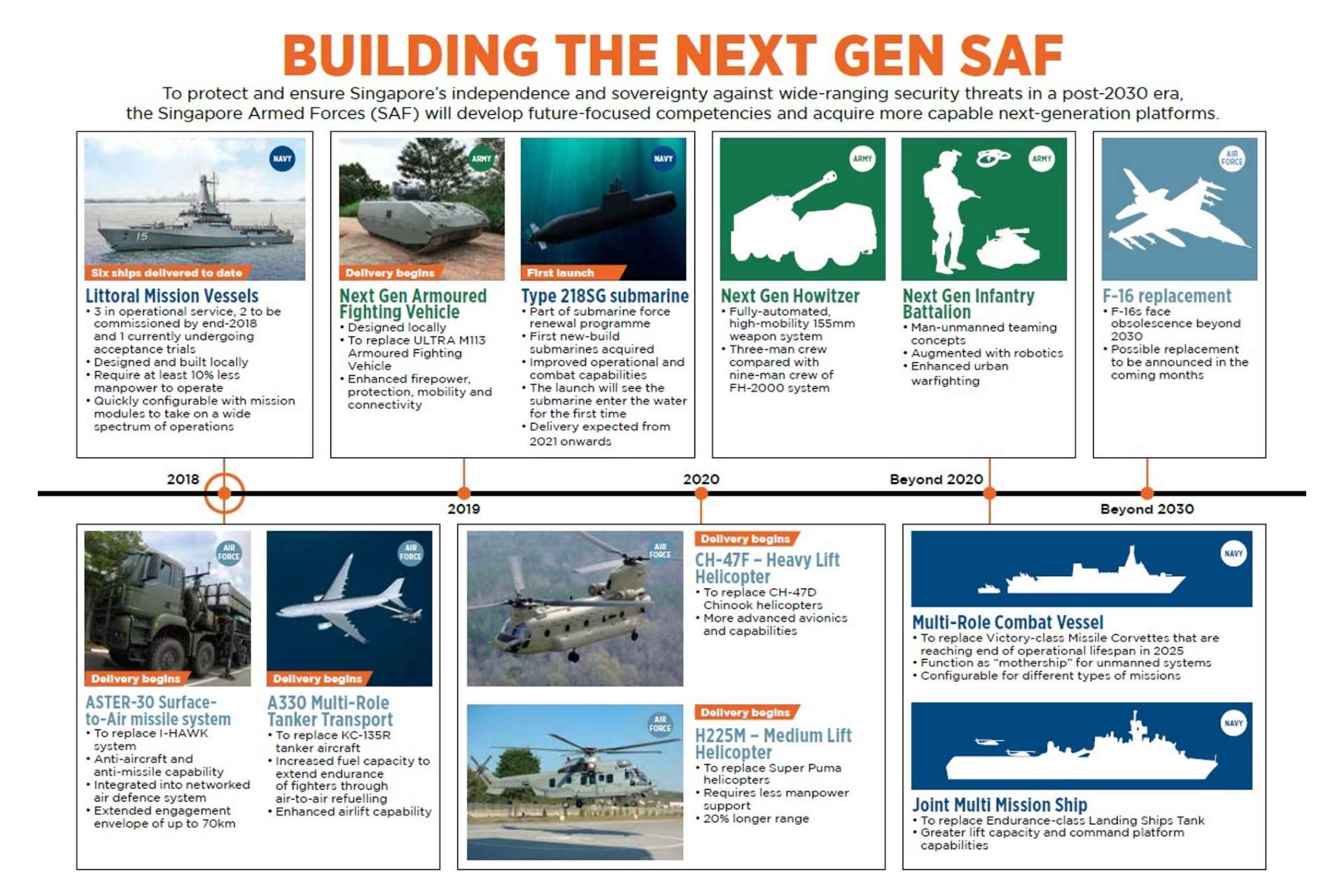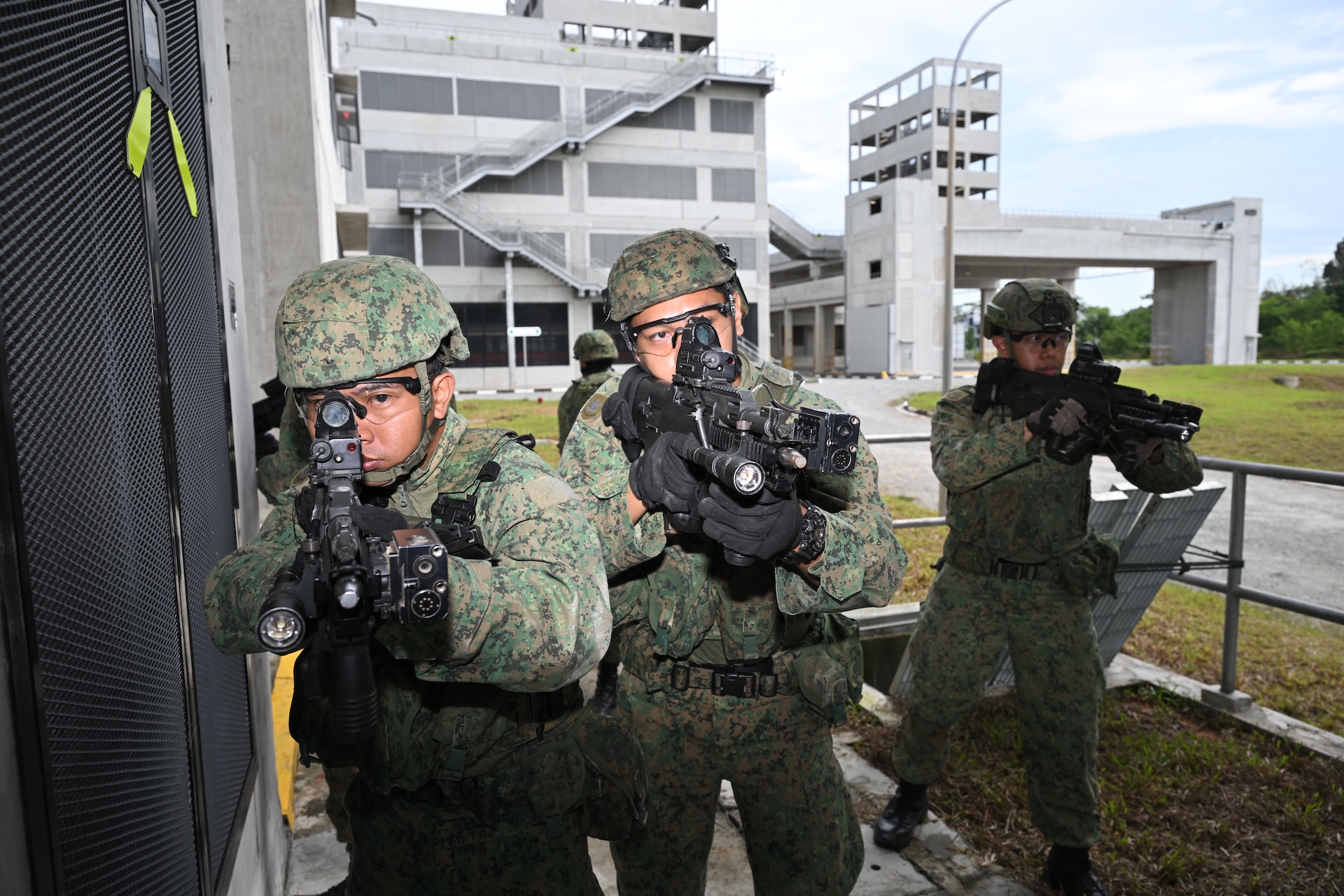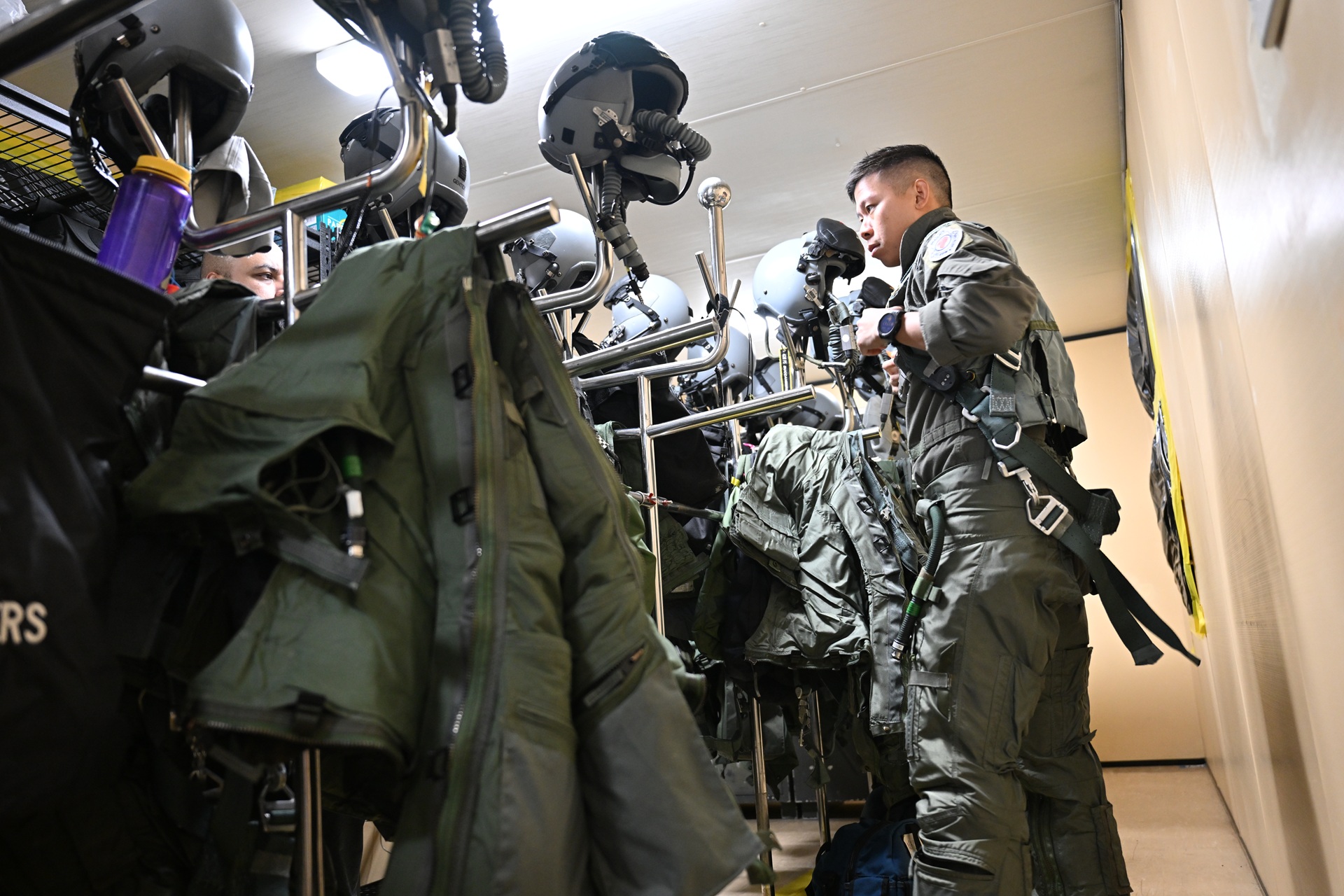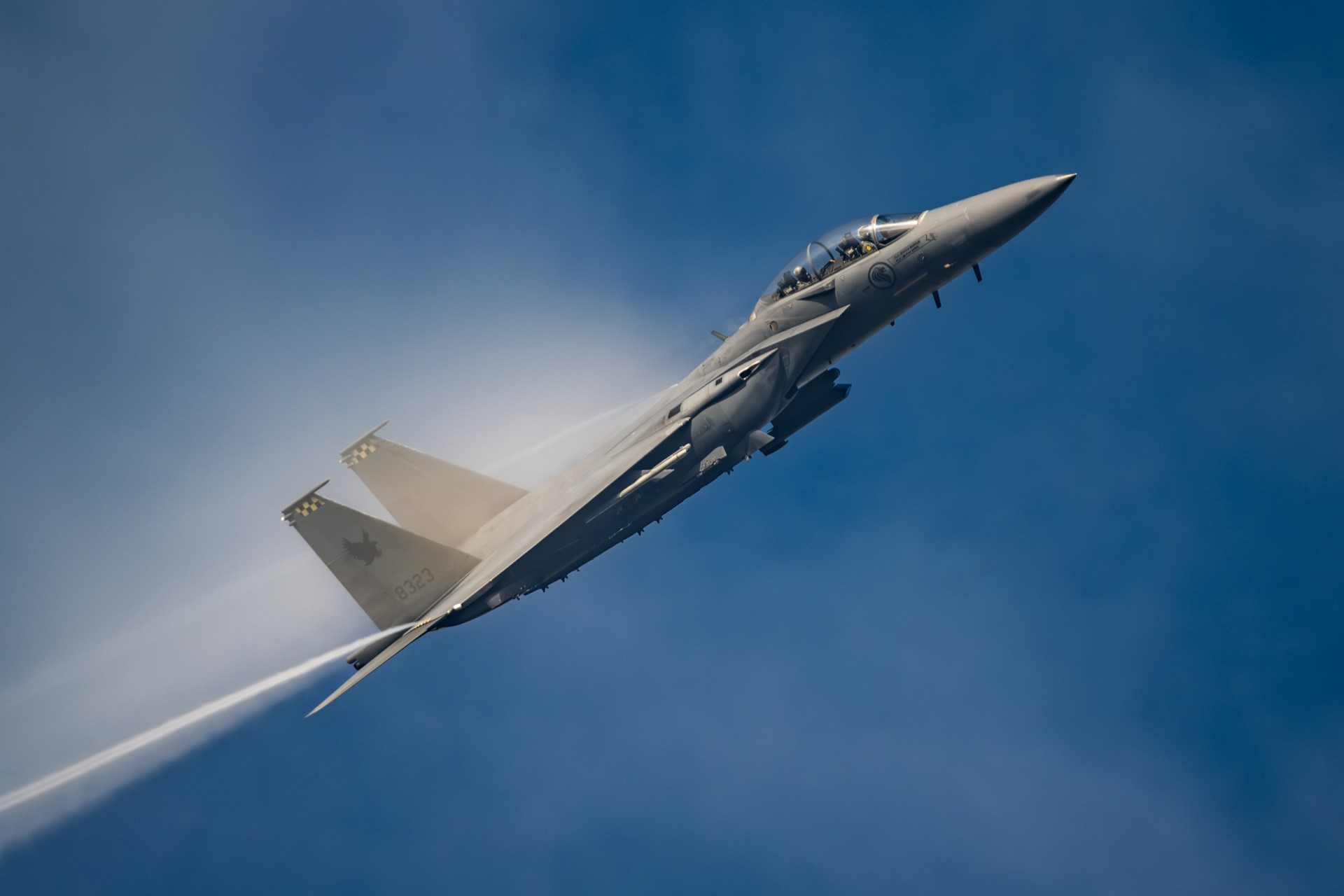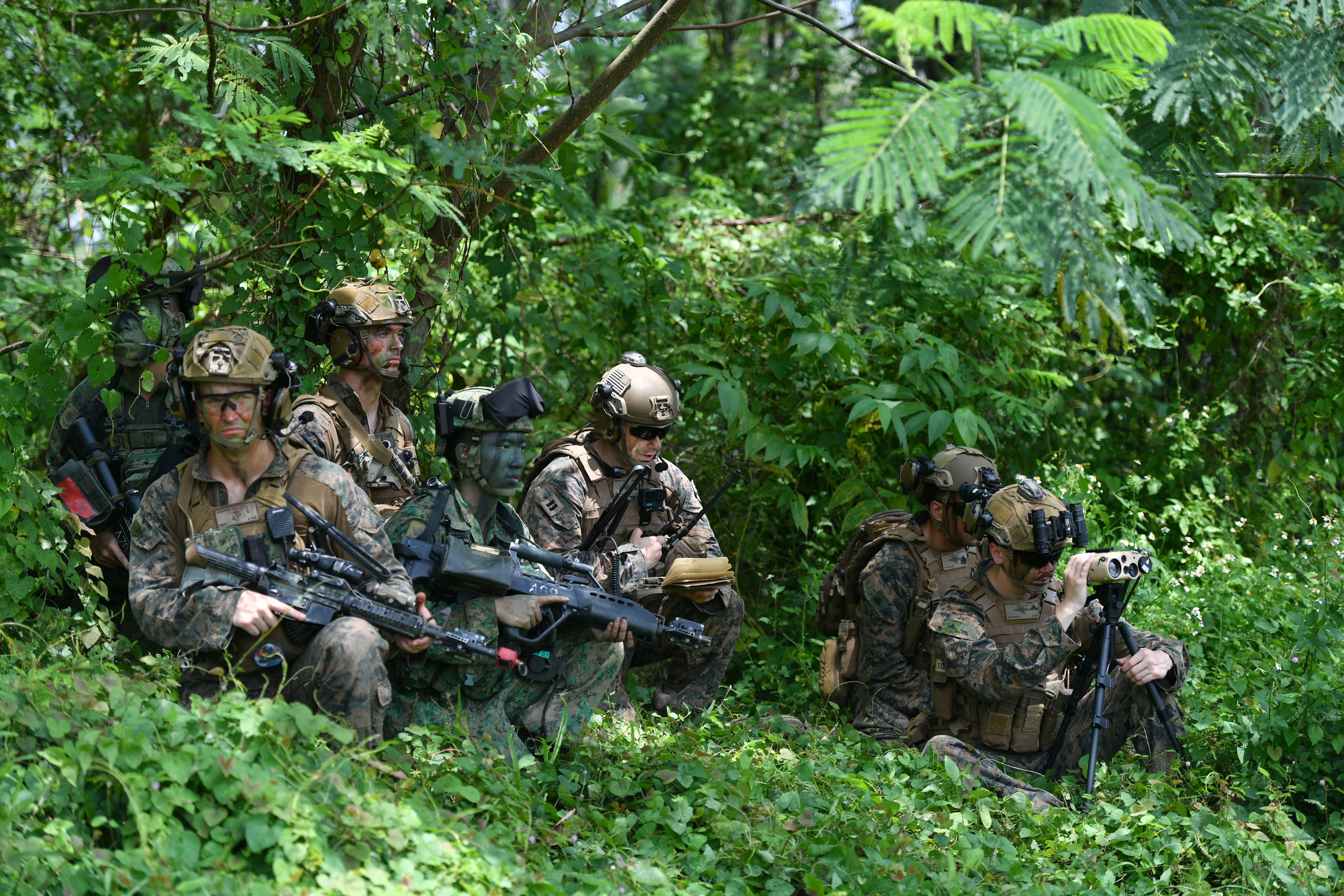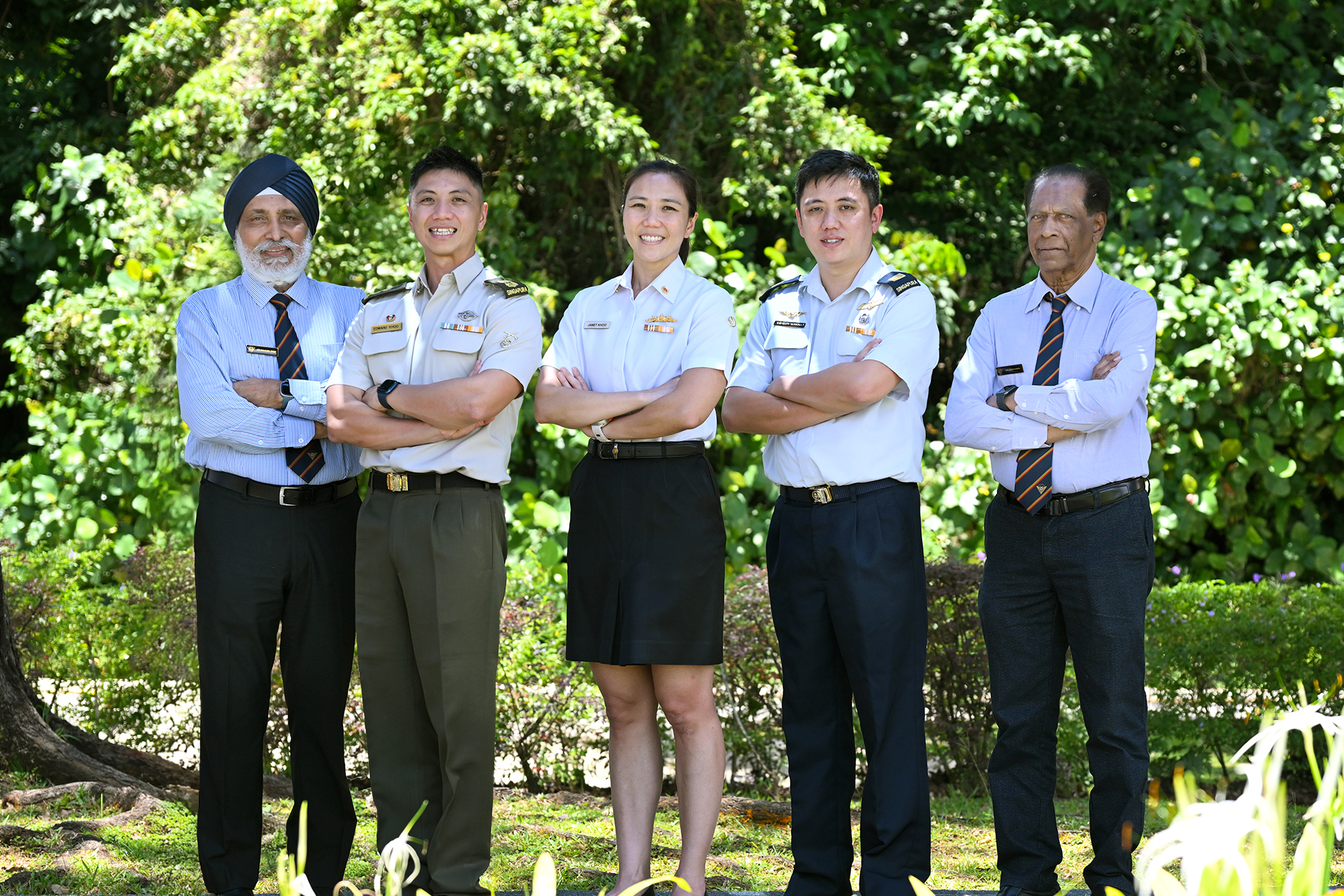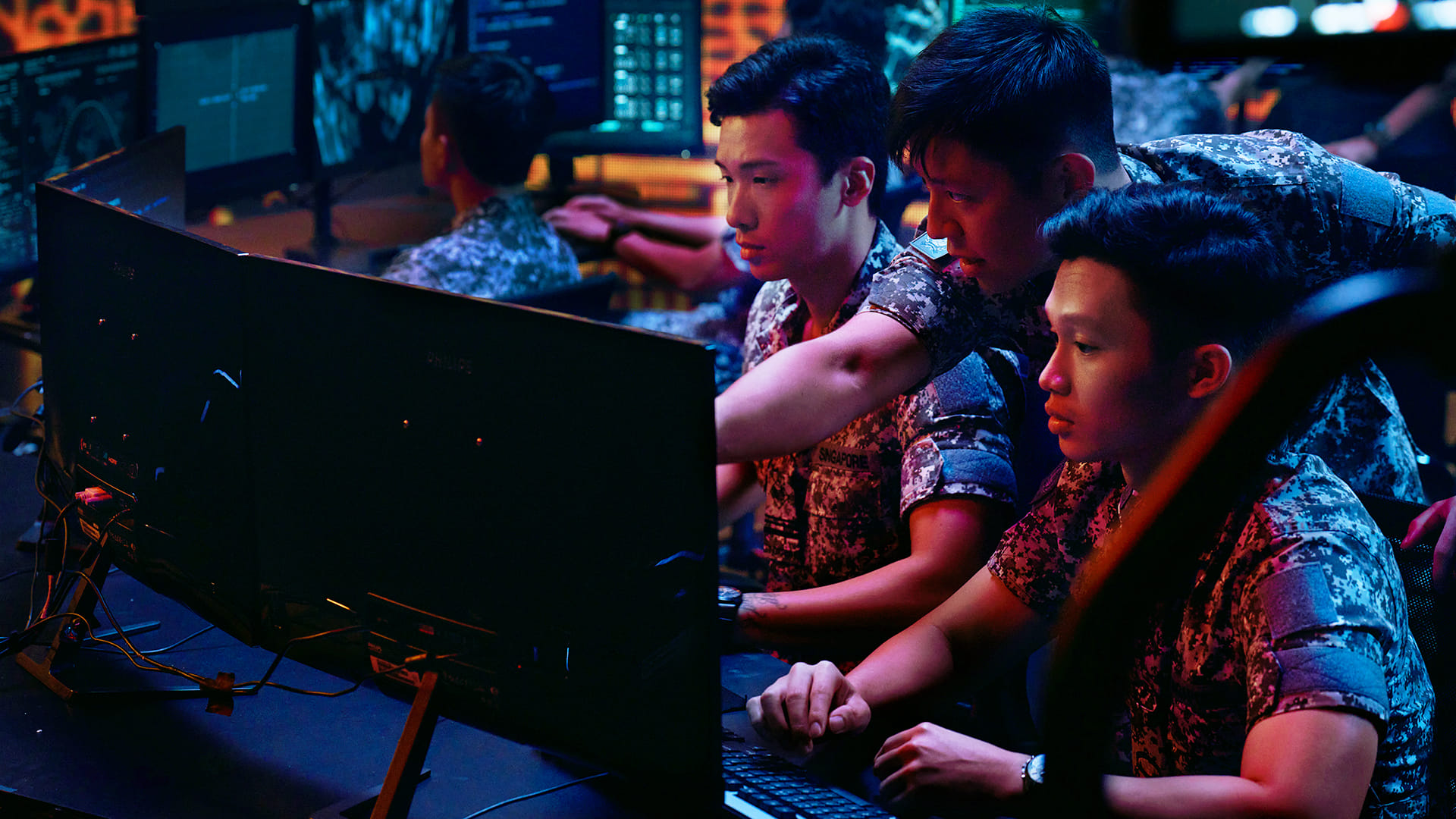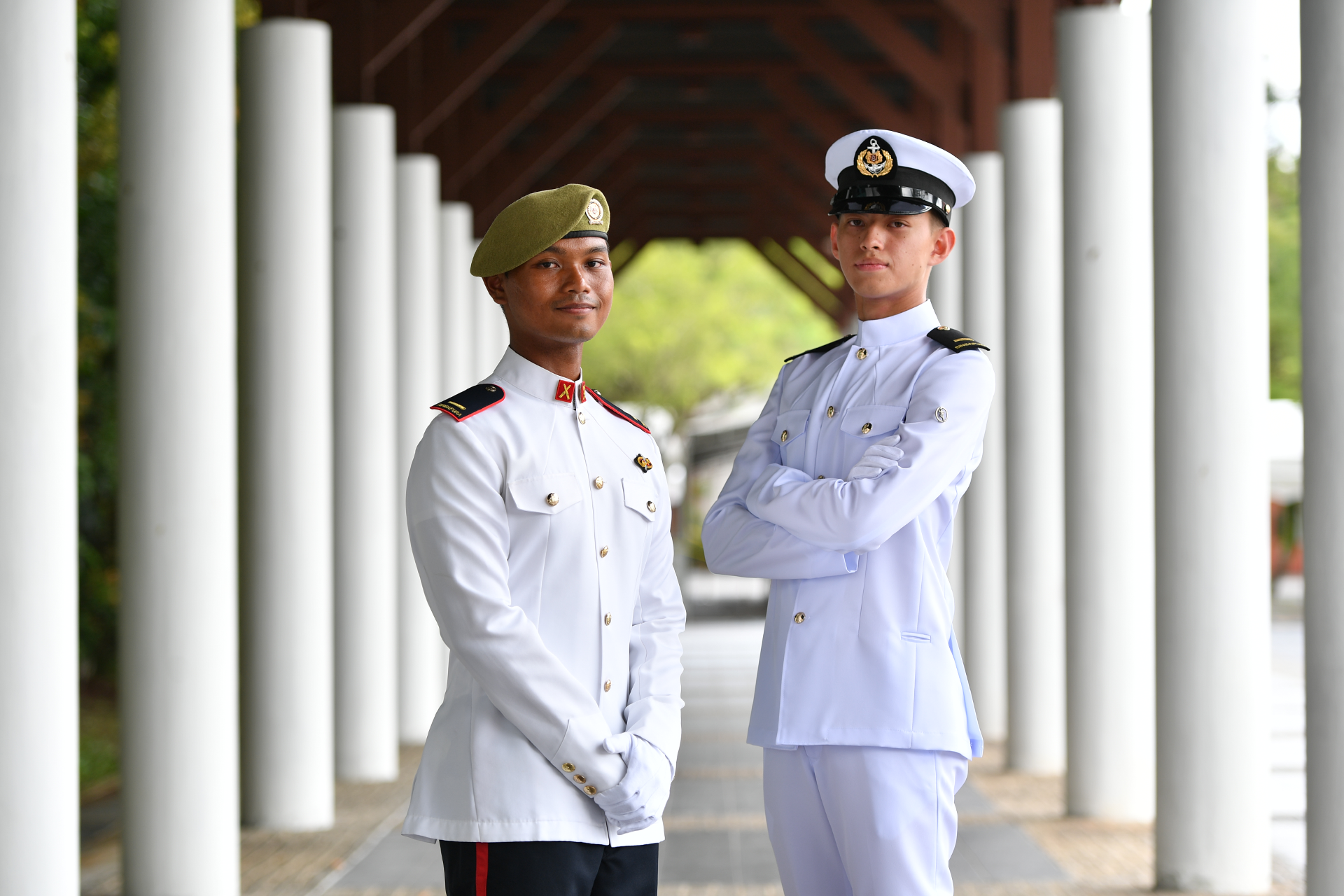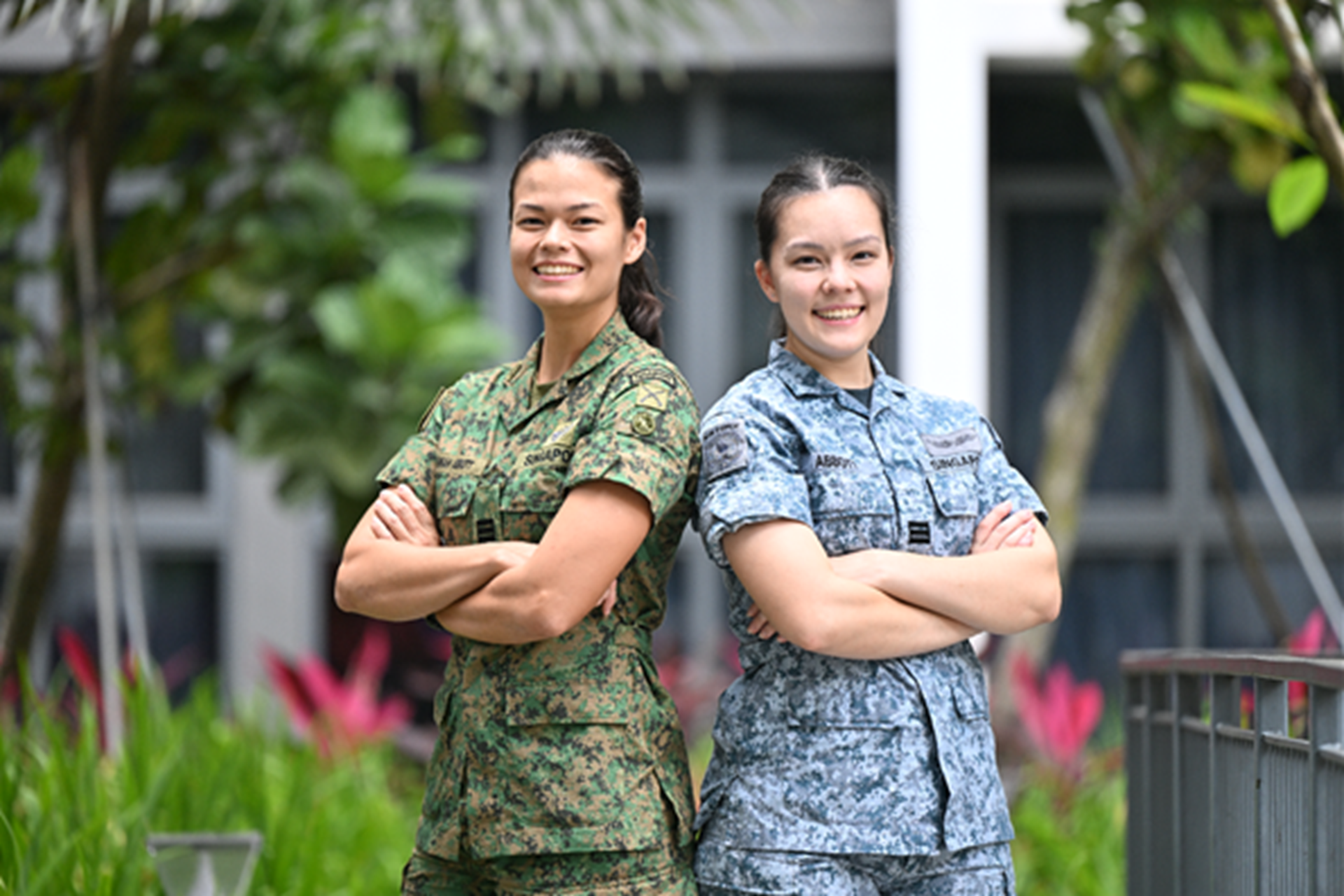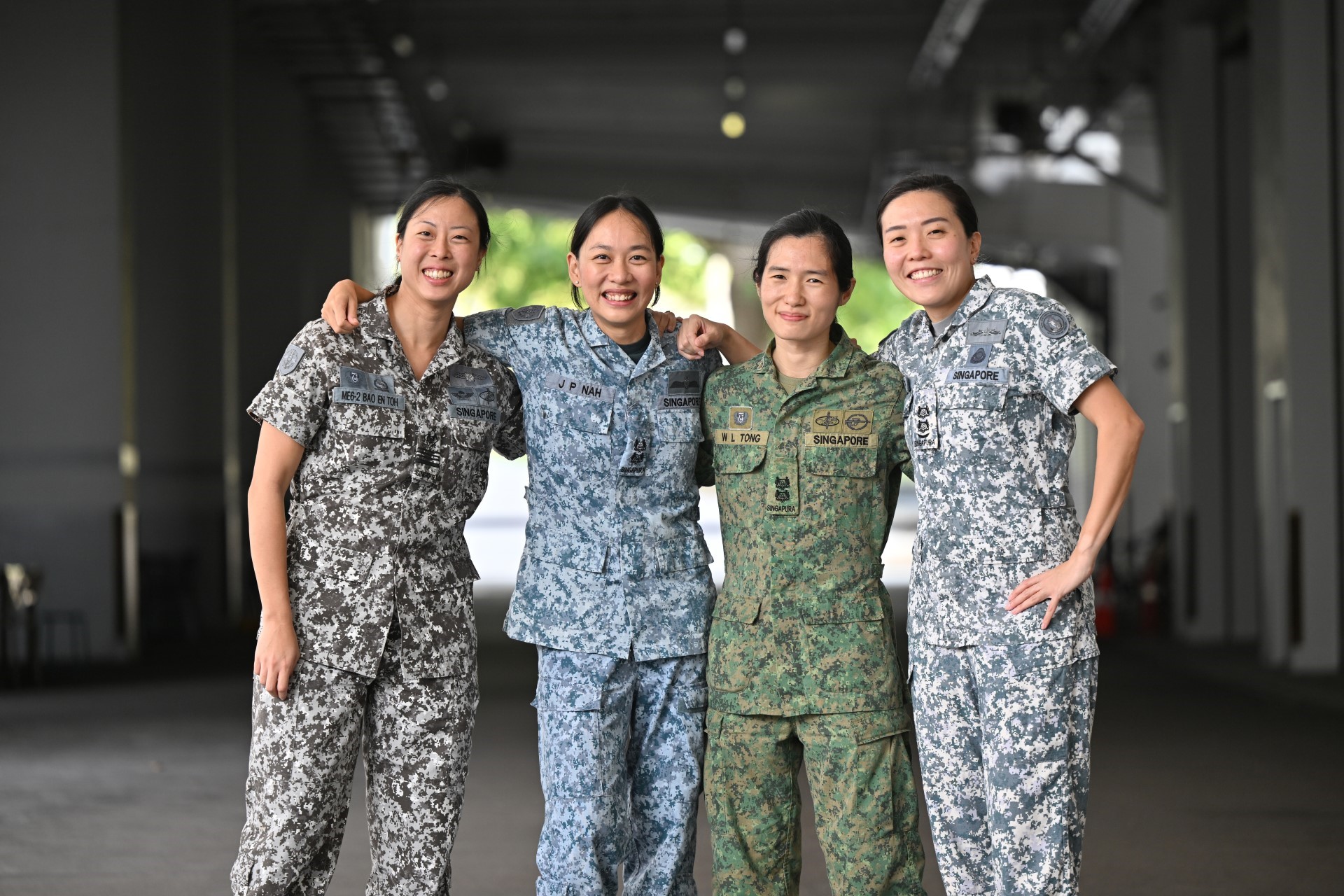DOING MORE WITH LESS, SAF PLANS FOR SMART PLATFORMS AND TECH: DR NG
// REPORT by Thrina Tham & Teo Jing Teng
// PHOTOS by PIONEER Photographers
The current leadership of the Singapore Armed Forces (SAF) has to live up to the spirit of their pioneers and build an SAF that is able to protect the next generation.
This was a key point made by Defence Minister Dr Ng Eng Hen in an interview on 29 Jun, ahead of SAF Day which falls on 1 Jul each year, where he laid out the strategies for a post-2030 SAF.
"To protect the next generation of Singaporeans, to protect Singapore (in the future)… we must plan (for the) long term, we must plan ahead," said Dr Ng.
Noting that the military is facing a projected one-third reduction in manpower because of falling birth rates, he said: "The SAF will do more, even when we have less.
"There are two key strategies for this…the platforms (we) acquire for the SAF we build and the smart use of technology."
Maximising resources with smart tech
The SAF has to use smart technology to amplify its effectiveness and reduce the use of manpower, said Dr Ng.
As part of efforts to innovate, the Singapore Army has set up a one-stop Integrated Forward Maintenance Hub (iFMH) where the maintenance and repair of tracked vehicles will be consolidated at Sungei Gedong Camp.
Previously, vehicles had to be transported to the ST Engineering Land Systems workshop in Jurong. With the hub set up this March, the manpower for maintenance repair has been cut down by 20 percent; while total repair duration was shortened by half – from an average of 24 days to 12.
Chief Maintenance and Engineering Officer from Headquarters Maintenance and Engineering Support, Military Expert (ME) 6 Tan Mu Yen said: "We wanted to organise all the relevant maintenance support functions and redesign the workflow to cut down on administrative downtime."This (reduces) time wastage, creating opportunity for productivity gain."
Other examples include the move towards building smart SAF camps, as well as a Smart In-Camp Training (ICT) app to enhance the ICT experience.
"If you walk through a camp, I should be able to recognise you by facial recognition…same when you go to the cookhouse and when you go to the armskote. I should be able to know who (has) returned arms (issued weapons) and whether the arms are clean or not, by electronic means," elaborated Dr Ng.
Operationally-ready National Servicemen (NSmen) will also soon be able to manage their schedules more efficiently with the Smart ICT app, where they can access their ICT training programmes up to six months in advance.
The app, which is undergoing trials and slated for a 2019 launch, will also provide commanders with records and attendance figures of the NSmen under their command.
Noting efforts to increase the use of smart tech in the SAF, Dr Ng said: “The next generation SAF must keep pace with the expectations of the next generation Singaporeans. That is what we are trying to do."
Dedicated space to innovate
Dr Ng also cited the creation of sandboxes to leverage technology and drive innovation. One such initiative by the Republic of Singapore Air Force (RSAF) is the iADOC (Air Defence and Operations Command) Launchpad, set up on 22 Mar.
Situated in Chong Pang Camp, the facility has realised in-house projects including 3D-printed tools, a smartphone application for Air Force Engineers and a 24/7 Remote Network Monitoring System that checks the connectivity status of RSAF assets.
Said iADOC Project Team Lead Captain Ramakrishnan: "We hope that our airmen and women can come here and conduct experiments, trial their ideas and take their applications back to the units."
"In a short span of three months, we already have projects (that have benefitted the units)," added the Air Warfare Officer (Command, Control & Communications).
One project at iADOC is the 3D printing of a fuel nozzle to fit the mouth of jerry cans that are used to hold either diesel or petrol, to ensure that only the right fuel type would go into the right jerry can.
Faster, more capable Army
On acquiring better platforms, Dr Ng said that the number of tracked and wheeled vehicles will double within the next decade.
This will include The Next Generation Armoured Fighting Vehicle which is set to arrive next year. "I think that will be the centrepiece of this next generation Army. It will replace our ageing platforms, our ULTRA M113s, which have served us well," said Dr Ng.
The new vehicles will be able to fire on the move and require 20 percent less manpower to operate. It will be accompanied by the Next Generation Howitzer, a fully automated 155mm weapon system that will have a higher rate of firepower and require a three-man crew – compared to the nine-man crew for the current FH-2000, also known as the Field Howitzer 2000
Said Dr Ng: "The next generation Army will be faster, heavier, (and) more deadly (on the battlefield)."
Building a modern navy
The Republic of Singapore Navy (RSN) will also be beefing up its fleet with more advanced platforms. For one, it will replace the Missile Corvettes with Multi-Role Combat Vessels (MRCVs) by 2025. The missile corvettes have been in service since 1989.
The MCRVs will act as a manned "mothership" and be equipped with unmanned systems, such as drones, to boost its capabilities.
It will play an important role in helping the RSN see further when monitoring trade routes at sea, noted Head Naval Operations Rear-Admiral Ken Cheong.
He said: "What is important is what you can see, so this ship allows us to put eyes forward (using the unmanned systems).
"In simple terms, (the capability means that) we are able to put a surveillance camera out at sea...So that we can be triggered early to respond to any illegal activities," he explained.
"(We will have) this whole network (of) surveillance cameras that we can bring out to sea to look at a large area, in a cost-effective way."
Additionally, the RSN's Archer- and Challenger-class submarines will be replaced with four new Type 281SG submarines. The new submarines will be Singapore's first new-build submarines tailored to meet the RSN's unique operating conditions. They will be delivered from 2021 onwards.
Said Dr Ng: "Our new submarines will represent a quantum jump in sub-surface capabilities – with 50 per cent longer endurance and certainly more deadly."
The Navy will also be replacing its Landing Ships Tank (LSTs) with bigger Joint Multi Mission Ships (JMMS), that has double the lifting capability of the LSTs. The JMMS will expand the RSN’s capability to transport aid during disaster relief missions and also be involved in counter-piracy operations.
Maintaining air superiority
The air force is a vital strategic asset and Singapore must continue to be one of the most capable air forces in the region, emphasised Dr Ng.
The Republic of Singapore Air Force's (RSAF) F-16 fighter jets, which have been in service for 30 years, are undergoing mid-life upgrades and will be obsolete beyond 2030.
As other militaries prepare to stand down their F-16s, the SAF has already started looking for its replacement and will make a definitive decision in the next few months, Dr Ng announced.
In choosing an alternative, Dr Ng said that the SAF will consider: the jet's capability to defend Singapore’s airspace; whether it can work with other SAF air, land and sea platforms; ease of maintenance; as well as the overall cost.
The RSAF will also replace the utility and aerial refuelling aircraft KC-135R with the new A330 Multi-Role Tanker Transport Aircraft, that will arrive later this year.
The A330 will be able to carry 20 per cent more fuel than its predecessor, meaning that it will be able to refuel more planes, enchancing the RSAF's endurance.
The RSAF will also centralise the entities that the it needs to experiment, test, validate and operationalise new air warfare concepts and capabilities in the Air Warfare Centre (see infographic for more).
Validation of SAF capabilities
While the SAF is gearing up for the future, it has also proven itself ready to take on present challenges. Recounting the Trump-Kim Summit that took place in Singapore, Dr Ng pointed out that the success of the summit validated the SAF's defence systems.
"We have been building up the SAF for more than 50 years. And short of a real war or terror attack, this was a real (operation) that the SAF responded to. I suppose in exam terms, this is the prelim test, (and) I think we scored an 'A'."
Dr Ng credited the success to long-term planning, saying that all the assets involved in securing Singapore were judiciously chosen.
"And it shows that this long-term planning, the strong commitment from national servicemen and Singaporeans to our defence capabilities, have paid off."
Safety a top priority
On safety, Dr Ng emphasised that zero training fatalities is not a target goal but "a norm to be achieved".
"It is a priority and all SAF commanders understand it and we are looking through our various processes, deep and wide, to ensure that we can (establish) this as the norm."
